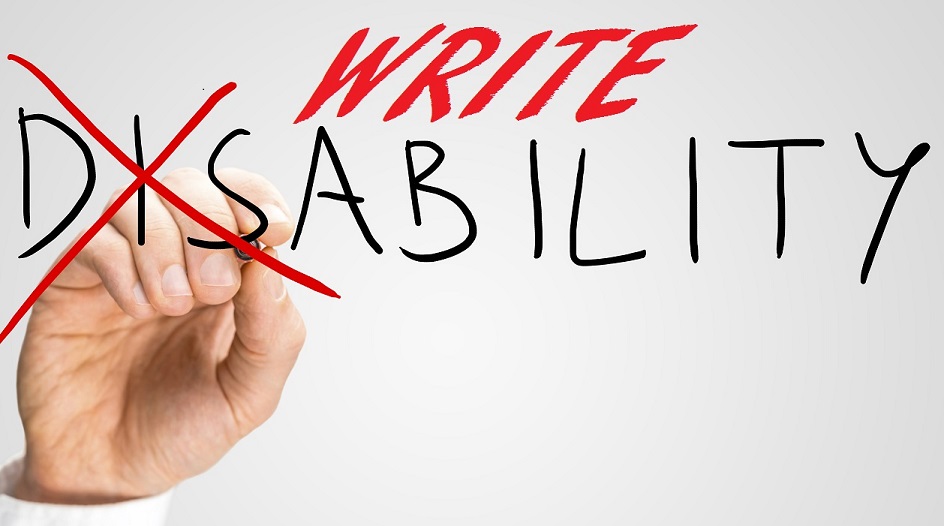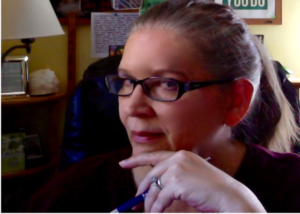Magazines, literary agents, and publishers continue to look for excellent writing in fiction and non-fiction genres which exemplify diversity. The public asks for more inclusion of disabled persons in their reading material, and agents and editors want to grant the desires of their readers.
For writers, research can help you deliver believable content to meet the demand. If you are writing about disability, you need to know some facts, and you need to research.
Writing about disability isn’t new. How we write about disability makes a difference. Disability doesn’t care about your sex, color, race, or religious viewpoint.
This article shares disability statistics and links to additional sources of information so you can write well on this topic. This beginning resource will give you an idea on how to conduct more research based on your writing needs.
Quick Statistics:
- Approximately 1 in 5 people in the United States currently has a disability.
- About one-third of 20-year-old workers today will be disabled before they reach retirement.
- Nearly 15% of the world’s population, have some form of challenge. That’s about a billion people.
- The number of individuals who have significant difficulties in functioning reaches upward to 190 million.
- Population numbers, aging, and the increase of chronic health conditions are the primary reasons for these high rates of disabilities. I should mention genetics because many disabilities can occur by being passed down through DNA.
These are staggering statistics. You or a loved one could become one of the disabled. A person in your family may have a disability they were born with, or have one because of accident, injury, or one which evolved over time.
What are these disabilities, and health conditions? While there are too many to list, they fall into several main categories. Disabilities may overlap categories. The descriptions listed here are general.
Categories of Disability:
- Mobility and Physical Impairments – using a wheelchair, using a cane, limping, visible limb deformities, skin and hair disorders.
- Head Injuries – Brain Disability – speech, motor coordination, learning disabilities.
- Vision Disability –blind, wear glasses, use a white cane, a seeing eye dog.
- Hearing Disability – communicate using sign language, wear a visible cochlear implant, hearing aids.
- Cognitive or Learning Disabilities – may have behavior problems, difficulty learning to read or write, find learning difficult.
- Psychological Disorders – may have depression, anxiety, mood disorders, schizophrenia, eating disorders.
- Invisible Disabilities – Fibromyalgia, Chronic Fatigue Syndrome, Autoimmune Disorders, Chronic Pain.
The Use of Awareness Ribbons, Days, Weeks, Months
An interesting article written by Erin Blakemore, “A Brief History of Awareness Ribbons” on what may be the origination of the iconic explosion explains where the use of the colored ribbons may have originated. Whether these icons are useful for recognition depends on whom you ask. Since anyone can create them, colors can vary. In recent years, colored ribbons for illnesses, disorders, disabilities, and other causes exploded across social and print media. If you choose to use a colored ribbon in your story, make sure you use the correct color.
Use the same advice for ribbons as when using the associated days, weeks, and months. Their sole purpose conveys awareness for the array of disabilities and chronic illnesses assigned. You can find an extensive list of ribbons and dates of awareness at Disabled World and a similar list on Wikipedia.
More Research Links for Writing About Disability and the Disabled:
- https://www.arts.gov/artistic-fields/literature National Endowment for the Arts, (NEA) Washington, D.C.
- https://www.arts.gov/writers-corner National Endowment for the Arts, (NEA) Washington, D.C.
- http://www.specialacademy.org/creative-writing/ Culture Disability Talent, California
- https://dredf.org/news/publications/the-history-of-the-ada/ History of the Americans with Disability Act – (ADA)
- https://dredf.org/media-disability/ Disability Rights Education & Defense Fund – (Doing Disability Justice)
- https://www.disabled-world.com/disability/types Types of disabilities and definitions
- https://www.cdc.gov/ncbddd/disabilityandhealth/disability.html – Centers for Disease Control and Prevention (CDC)
Kathryn M. B. Johnson lives and writes from Staunton, VA. She writes articles, essays, and blogs, and is compiling a book of essays about her time as a Life Skills Instructor for persons with challenges. She is also working on a memoir on learning through adversity, and mulling ideas for a mystery series. Connect with her at kathrynmbjohnson.com on Facebook and Twitter.






2 Comments
Kathryn, this is a much-needed article. I spent seven years working for cbm, which is the world’s largest organization serving the needs of people with disabilities and those at high risk of disability in the world’s poorest countries. The disability-poverty cycle is appalling. People with disabilities are the largest minority group in the world. And disability is a growing public health and economics concern, especially in countries that are upwardly mobile and thus have longer-lived populations.
But it’s so overlooked in the body of literature. I did see a middle-grades novel at Barnes & Noble recently called A Blind Guide to Stinkville and another called Anything But Typical by Nora Raleigh Baskin. But we need more of these kinds of books where the protagonist or another character has a disability that is neither pitiable nor heroic but simply present.
Hello Holland,
I agree! I’m reading books by authors who write about their disabilities. These people are amazing, courageous, and talented! I have been drawn to persons with disabilities since grade-school age. I had no idea then it would be my destiny to uplift, encourage, and devote time and energies using my lifetime of experience through my gift of writing. Using my writing as a disabled person myself has so much more meaning. I believe books being written with disabled characters need to be written once you know how a person would look, talk, and act. It’s not only these features, but we should understand what is beneath those characteristics. I worked with persons at Woodrow Wilson Rehabilitation Center, now Woodrow Wilson Workforce Center, in Fishersville, VA for several years as a Life Skills instructor, and Orientation leader. I based everything on we are not a label, we are not our disability. We have talents. I get goose bumps on my arms with joy as I remember all the talent sitting around a large conference table every week as I learned of all the abilities these people had! Yes, these people are so high-risk. Incomes are often low, and we are the largest minority group in the world! I want to give a voice and a name to the faces of those with disability. I am but one voice, and a small one at that, but the problem is huge. I hope to write my articles. Continue working on my novel (s), all of which will feature a disabled character with abilities and struggling with real-life issues.Thank you so much for your wise and thoughtful comments.